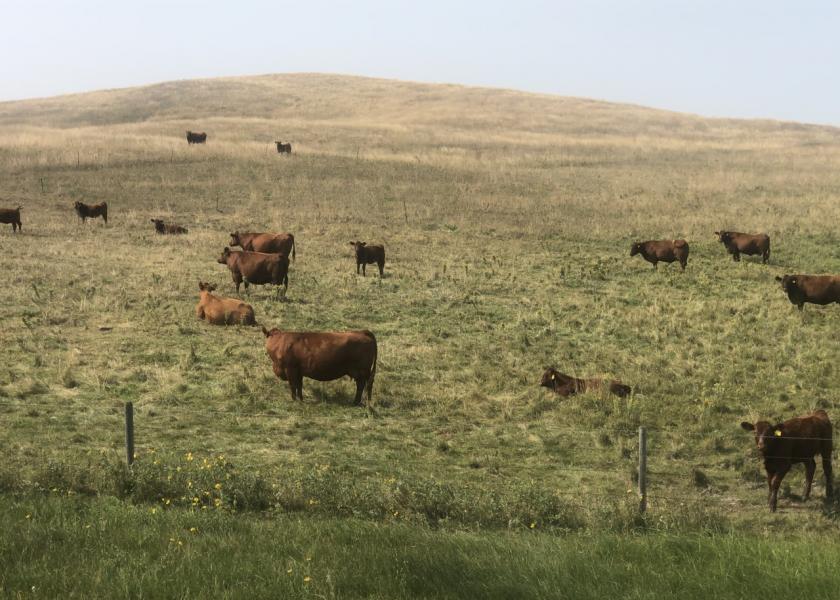Fall Grazing Management Influences Forage Production

Dry conditions are common across most of North Dakota with most areas receiving below normal precipitation over the last two months. This, in combination with above average temperatures, is impacting the condition of pastures across the state. Currently, the majority (59%) of pastures in the state are reported as being in fair or lower condition.
Grazing management in the fall can have significant impacts on forage production during the subsequent growing season.
“Pastures in our region are dominated by cool-season grasses, which can make up 85% or more of the species composition,” says Miranda Meehan, North Dakota State University Extension livestock environmental stewardship specialist. “These cool-season grasses can develop tillers in the fall, and the development of these tillers has a direct impact on plant growth the next year.”
“If livestock graze tillers below the growing point in the fall (in between the bottom two leaves), they usually will not survive the winter,” says Meehan. “Drought stress also affects the survival of fall tillers. Fall droughts either don’t allow buds to come out of dormancy, thus no new tiller growth, or cause death to those tillers that did grow. If tillers do not establish or survive the fall, a delay in growth and development will occur the following growing season due to new tiller development in the spring.”
Monitoring degree of use is one way to prevent negative impacts to developing tillers. The recommended utilization level for proper use of grasslands is 40% to 60%. At this level, rangeland utilization is fairly uniform, with 65% to 80% of the height of desirable forage species being grazed. Livestock should be removed when this level is exceeded.
An NDSU Extension study found that pasture with greater than 80% forage utilization had delayed forage growth and reduced forage production by as much as 57%. A full article about the study is available in the 2022 NDSU North Dakota Livestock Research Report.
The NDSU Grazing Monitoring Stick can aid in monitoring forage utilization on range and pasture. The grazing monitoring stick does require an ungrazed area with similar forage species for comparison.
Here are the steps for using the grazing monitoring stick:
- Calculate the percent of the plant height removed by dividing the grazed height of the plant by the ungrazed height. Subtract this amount from 1.
- Multiply this amount by 100 to determine the percent of height removed.
- Correlate this number with those in the chart in the NDSU Extension publication “The North Dakota Grazing Monitoring Stick: A Way to Measure Range and Pasture Utilization” (https://tinyurl.com/NDSU-GrazingStick) to estimate the percent of entire plant weight removed.
“A general rule of thumb is to target 50% utilization by weight during a grazing period, as well as at the end of the grazing season,” says Kevin Sedivec, NDSU Extension rangeland management specialist. “If greater than 50% utilization occurs during a grazing period, plant recovery will be slower, which means plants require a longer recovery period between grazing events to maintain their health.”
High use of grasslands, especially in the fall, can result in tiller mortality by either removal of the growing point or physiological stress to cool-season grasses. If pastures receive high grazing use, they must be given adequate time to recover and turnout should be delayed on these pastures in 2023. If pastures are not given time to recover, forage production and pasture condition will decline.
“Monitoring pastures will be especially critical if dry conditions persist through the fall, as drought stress may increase tiller mortality,” says Sedivec.







